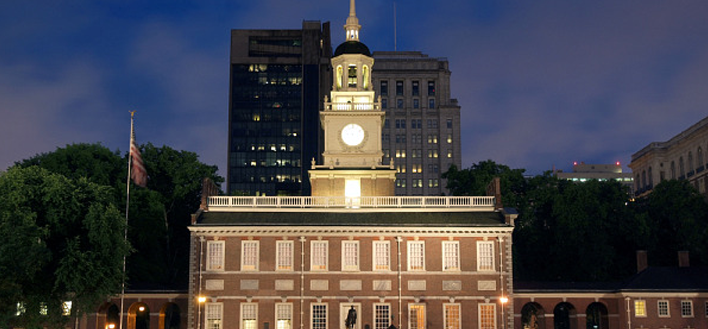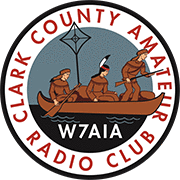5 QSO's
Not a huge week. But that doesn't mean I haven't been on the air. This week, for something new, I checked in or at least listened every day to the Nebraska Morning Phone Net in the mornings, and in the evenings, the Nebraska CW net, Kansas Net, or the Tenth Region net.
A "Net" is a network of ham radio ops who work together to "pass traffic" as part of the NTS or National Traffic System. "Traffic" could be any non-commercial communication from one person to another, anywhere in the country. It's like sending a telegram, but there's no charge and the message can't be for business purposes. Congratulations, Happy Birthday, Planning to arrive on the 3th etc etc.could all be "traffic" passed by the NTS.
A person can contact a Ham and say "hey, can you send my gran in San Diego a message?" The Ham takes the message, and puts it into the format used by NTS. That evening, he checks in to the local repeater net where folks from the surrounding area, say 25 mile radius, congregate on the air at a specified time. For example, a club here has a net every Monday on the club repeater. Folks from all around the Omaha area check in and there are announcements about club activities, maybe a trivia question, birthdays, anniversaries and other announcements, a time for everyone to make comments, etc. At this net, our Ham can check in and let the "Net Control Station" know that he has message traffic. The "Net Control Station," is the guy "in charge." He asks everyone "Can someone take this message for California?" Some nets have designated liaison stations that always represent them at the next level. In our local example, another ham on the net hears and responds that he is going to check in to the state-wide traffic net later, so he can take the message. Net Control tells him to meet the other ham on a different frequency where they can pass the message.
Our man then checks in to the state-wide net and the scene is repeated, this time to the regional net, and once more to the area net. The Area Net folks then make trans-continental connections. Our message would go from an Omaha net to Nebraska, to "Tenth Region" which is NE, IA, KS, MN, MO, SD, ND, Saskatchewan and Manitoba, then to the Central Area, which covers the middle of the continent. From Central Area, a Trans-Continental Corps operator contacts his regular liaison in the Western Area, and the message follows a similar path from Area to Region 7, to California section, to a local San Diego net and a helpful Ham in San Diego will deliver the message to the destination by phone or in person.
Crazy! That's gotta take a long time! Nah. Most messages are delivered within 24 hours.
To ensure efficiency, the nets run in cycles throughout the day, and from east to west, they follow each other on the hour across the country. For example, in the 4th daily cycle, there are region nets in the Eastern area at 9:30PM ET, then here in Central at 9:30 CT, etc. so a message from NE to CA could be delivered to the final destination in just a few hours.
So I have been checking in to the Region 10 late net daily. I've sent messages to Hawaii, Florida, and Ohio, and I've received and delivered a few in the Omaha area.
While I have checked in to nets before, this is the first time I've passed traffic. It has been fun, kind of exciting.
I know what you're thinking. One or both of the following:
- What in the world? I can pick up my cell phone and text a person on the other side of the planet nearly instantaneously. Why would I ever use such a slow and antiquated method??
- I'm remembering the proverbial game of "Telephone" where the message is terribly mauled by the time it gets to the destination. This sounds like the same thing.
To #1 I respond "You wouldn't. Unless..." Yes, it's slower than texting or emailing, or even phone calls. The NTS was designed at a time when not every house had a phone, long distance calls and telegrams were expensive, and there was no other way besides mail that could take a week or more. We've advanced beyond that, but could those conditions ever return? Have you heard of the Texas ice storm blackout? Great Northeast Blackout? Hurricanes, floods, tornadoes, natural and man-made disasters could all pose a threat to the infrastructure we rely on today. When those situations arise, it's nice to have a group of people trained and equipped to get messages into and out of stricken areas where services are down. The guys who use home-made radios with battery packs charged by the sun will be worth a million smart phones.
To #2, NTS messages are typed/written in a specific format pictured above. There are built in error checking aspects to the messages. Also, when the messages are transmitted by morse code, there's no hearing an "S" and thinking it was an "F" etc. It's robust and reliable.
So that's how I spent most of my radio time this week. I don't log net participation because I don't think it counts that way. There is a log of my participation, and on my computer I have a log of the messages that have come through my station.
It's a lot of fun. There's camaraderie and skill-building in the process, and there is a certain romance to the whole thing. It is technologically anachronistic, but...so am I.
Thanks for reading! If we had a QSO this week, thank you!
If we didn't, I hope we do soon.
73!
"This week [...]" is a summary of Radio-related activity from Saturday through Friday.










































